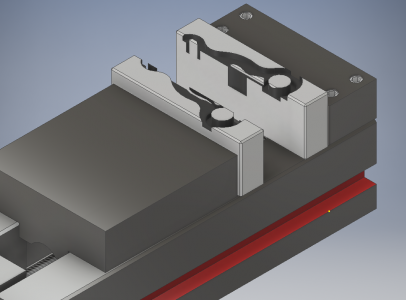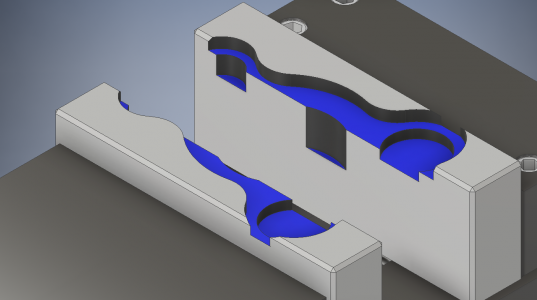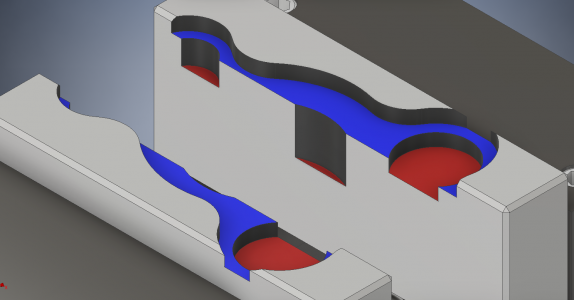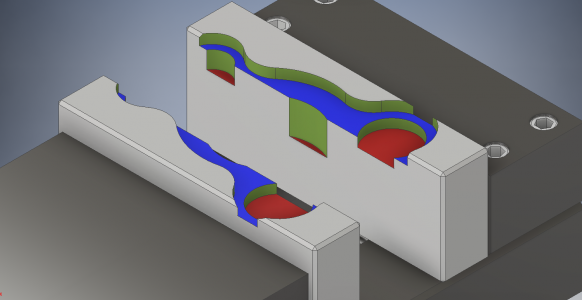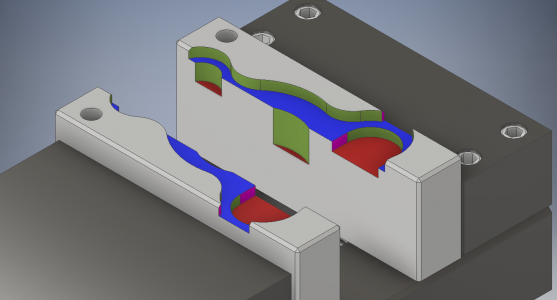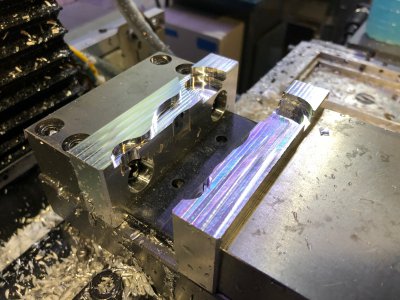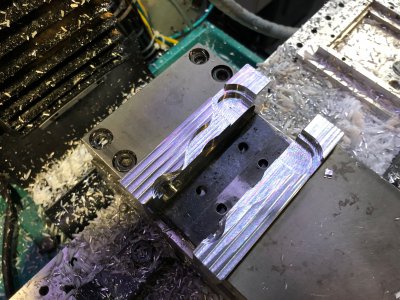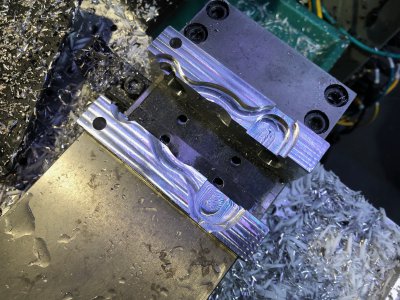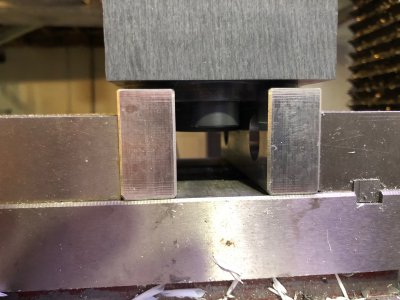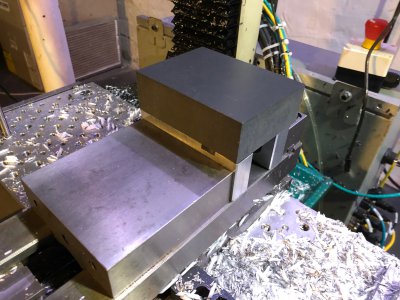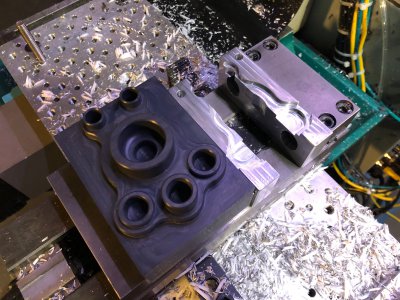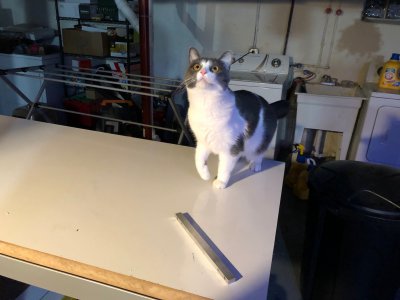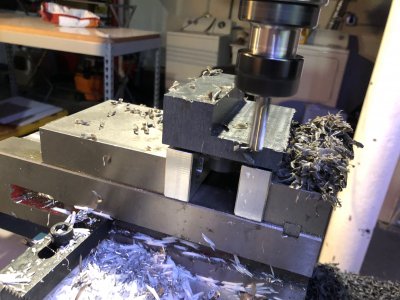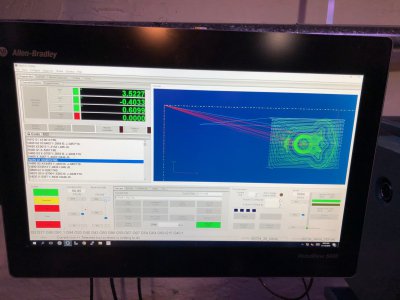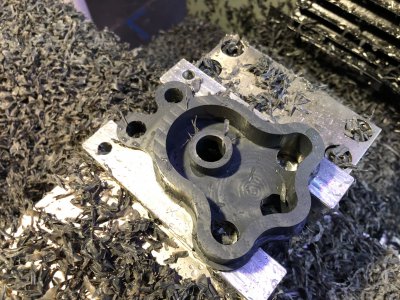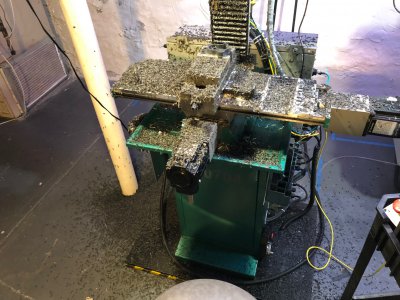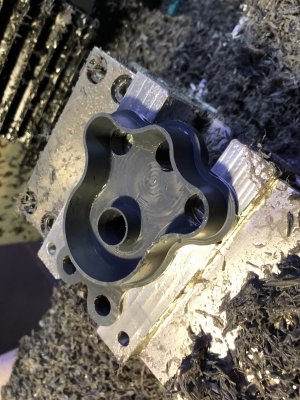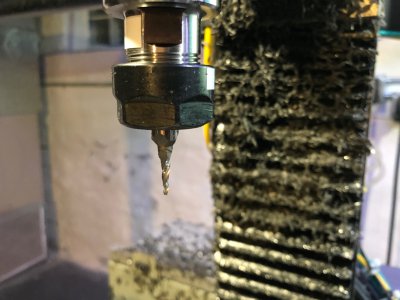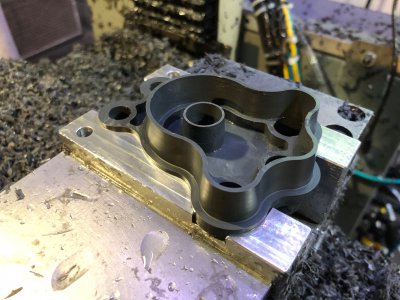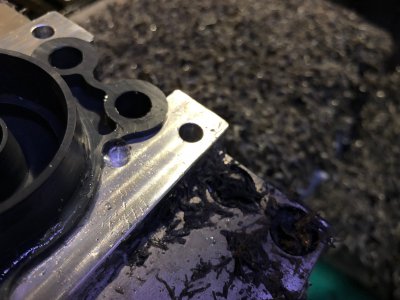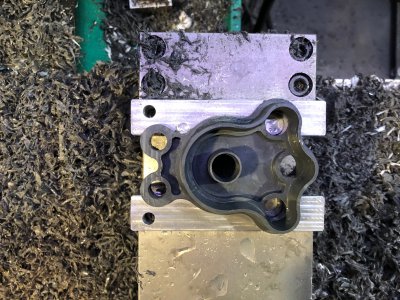- Joined
- Mar 26, 2018
- Messages
- 2,724
I just got permission from a past customer to share some pictures of a job I did for them.
5 Assemblies, one part was free machining brass, one part was 316 Stainless.
The slender part was cut with a single pass from 7/16" barstock and finished with fine sandpaper for finish and to dial in the final size evenly along the length of the part. The full radius on the small end was cut with a form tool. Tolerance was +/- 0.003" all over. I had a bit of difficulty holding tolerance on the overall length and diameter of the slender part. The second operation used my CNC as a lathe with tools ganged in the vise. The profile was finished using a sharp corner CCGX insert and the grooves machined with a Thinbit by Big Kaiser tool swapping the insert between sizes mid program. The small M3.5x0.6 thread was cut with a die. The cross hole was drilled on the CNC in a third operation.
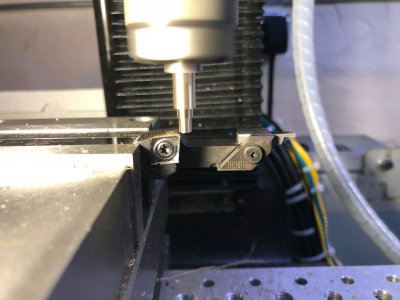
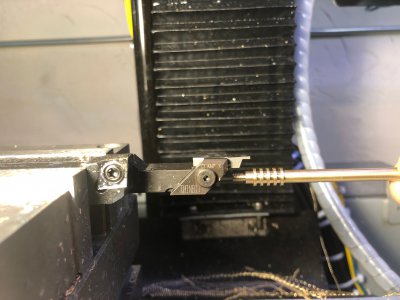
The stainless "ball" was roughed from 1/2" barstock on the lathe, the smaller radius cut with a form tool, center hole drilled with a carbide drill, and finally tapped M3.5x0.6. The stock was parted off on the lathe, threaded onto a fixture mounted in a TTS toolholder, and the larger profile was cut on the CNC. The CCGX insert held up to the stainless quite well and left a beautiful surface finish. The part was fixtured for a 3rd operation on the CNC were the 3 dimples were drilled with a ball endmill.
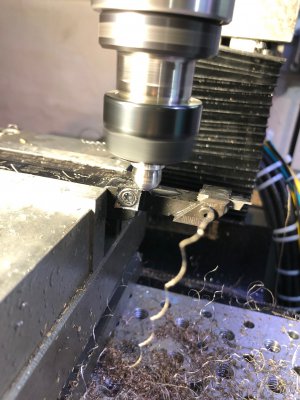
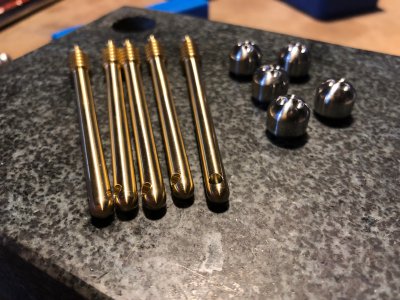
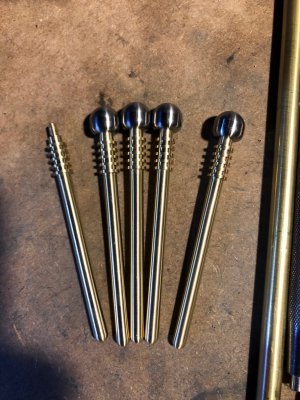
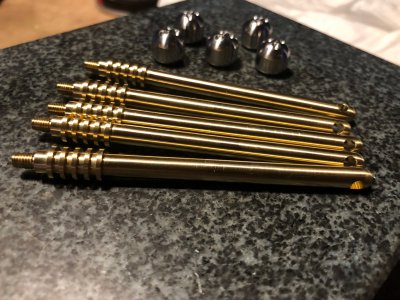
Parts were cleaned and deburred before shipping them off.
I had a lot of fun with this job and have plans to keep working with this customer again in the future.
Mike
5 Assemblies, one part was free machining brass, one part was 316 Stainless.
The slender part was cut with a single pass from 7/16" barstock and finished with fine sandpaper for finish and to dial in the final size evenly along the length of the part. The full radius on the small end was cut with a form tool. Tolerance was +/- 0.003" all over. I had a bit of difficulty holding tolerance on the overall length and diameter of the slender part. The second operation used my CNC as a lathe with tools ganged in the vise. The profile was finished using a sharp corner CCGX insert and the grooves machined with a Thinbit by Big Kaiser tool swapping the insert between sizes mid program. The small M3.5x0.6 thread was cut with a die. The cross hole was drilled on the CNC in a third operation.


The stainless "ball" was roughed from 1/2" barstock on the lathe, the smaller radius cut with a form tool, center hole drilled with a carbide drill, and finally tapped M3.5x0.6. The stock was parted off on the lathe, threaded onto a fixture mounted in a TTS toolholder, and the larger profile was cut on the CNC. The CCGX insert held up to the stainless quite well and left a beautiful surface finish. The part was fixtured for a 3rd operation on the CNC were the 3 dimples were drilled with a ball endmill.




Parts were cleaned and deburred before shipping them off.
I had a lot of fun with this job and have plans to keep working with this customer again in the future.
Mike


